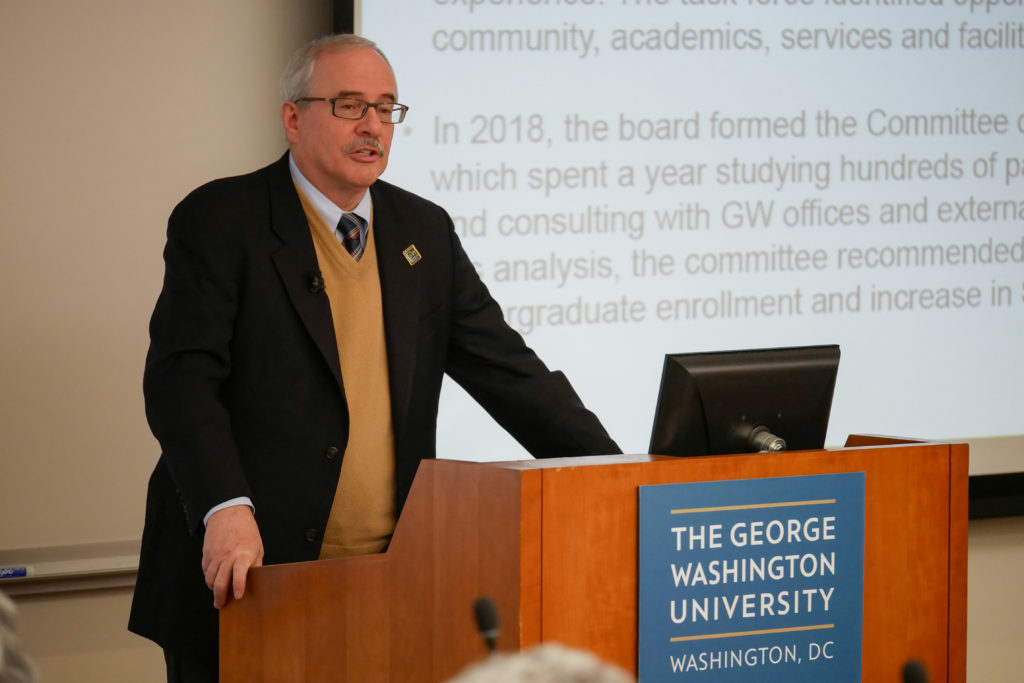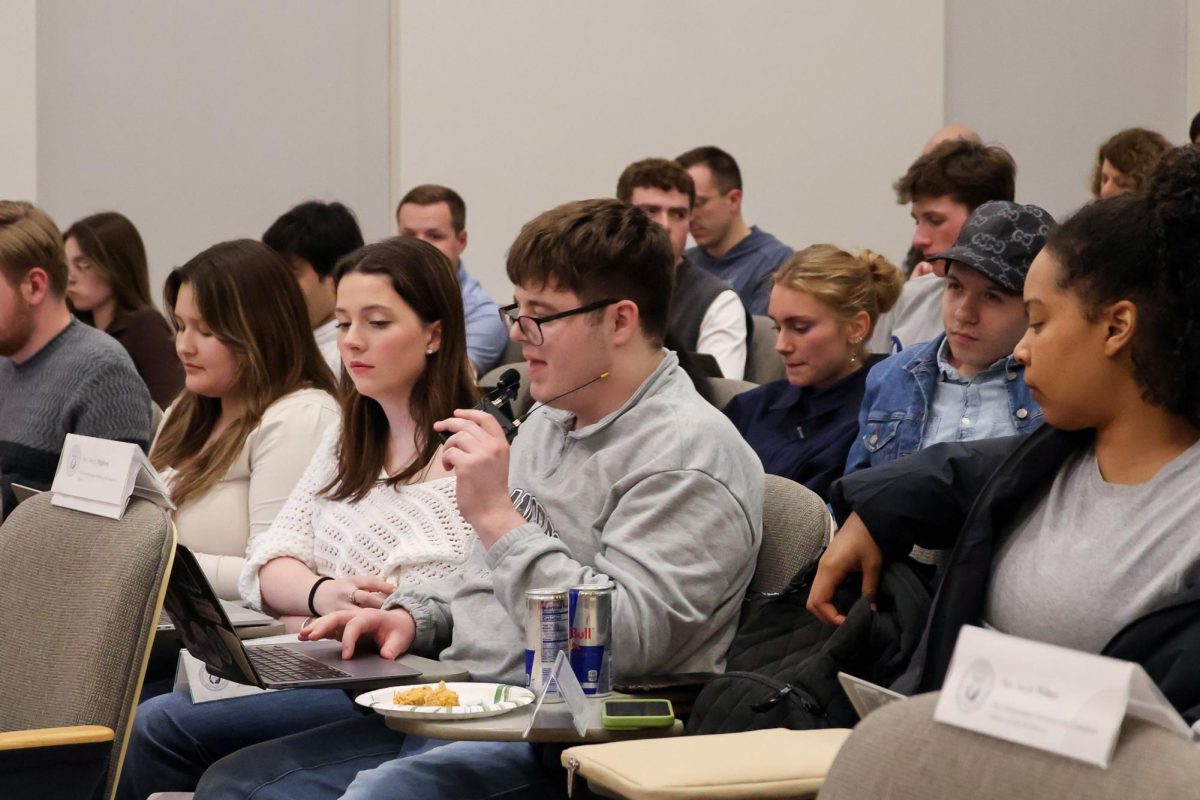Officials plan to reduce the incoming class size to 2,250 excluding transfers next year while maintaining current levels of racial diversity and academic quality.
University President Thomas LeBlanc announced at a Faculty Senate meeting this month that officials hope to enroll 2,250 regular fall students and grow the proportion of STEM students to 26 percent – an annual increase of about 2.5 percent – in next year’s incoming class. LeBlanc’s presentation comes months after faculty passed a petition in October requesting data on officials’ plans to reduce the undergraduate population by nearly 20 percent and increase the proportion of STEM to 30 percent.
“If you’ve never really looked at enrollment management, it is a fascinating, intellectual challenge to figure out how to go from 27,000 applications from different countries, different states in the Union, different income levels, different academic interests – all of that – and boil it down to a freshman class that actually meets goals that the institution has pre-defined,” he said.
The reduced incoming class will be accompanied by an estimated 300 transfer students, according to presentation slides. The figures represent a sharp break from the recent upward trend in class sizes – on-campus undergraduate enrollment grew by about 13.8 percent between 2013 and 2018, according to institutional data.
He said officials plan to maintain the current racial balance of the student body, which rose to its highest level this year in recent memory. Internal models developed by former Provost Forrest Maltzman in October, which were obtained by The Hatchet, revealed that proposed enrollment changes could drop racial diversity levels by more than 33 percent in some scenarios.
“We are not going to give an inch on our diversity gains,” LeBlanc said at the meeting.
LeBlanc added that officials determined that a 20 percent reduction in enrollment was right for the University after observing that the University could lose $32 million in tuition revenue for each 10 percent reduction in the undergraduate population. Faculty have previously raised concerns about the effects of the revenue losses on the University’s programs.
“Enrollment management is complex, involving trade-offs across many dimensions,” LeBlanc said in the presentation. “Every year, there are adjustments based on many factors.”
LeBlanc said officials will need to reexamine their approach to the University’s tuition discount rate – the average discount given to students through scholarships and grants off of the full price of tuition – once the University’s fixed tuition policy ends for the Class of 2024.
He said first-year students have historically received a lower discount rate than they might otherwise because of the policy, which does not allow officials to change each class’s tuition to meet revenue needs. GW’s average tuition discount rate for first-year students clocked in more than 11 percentage points lower than the national average this year.
“The way we think about discount rates needs to change,” he said.





